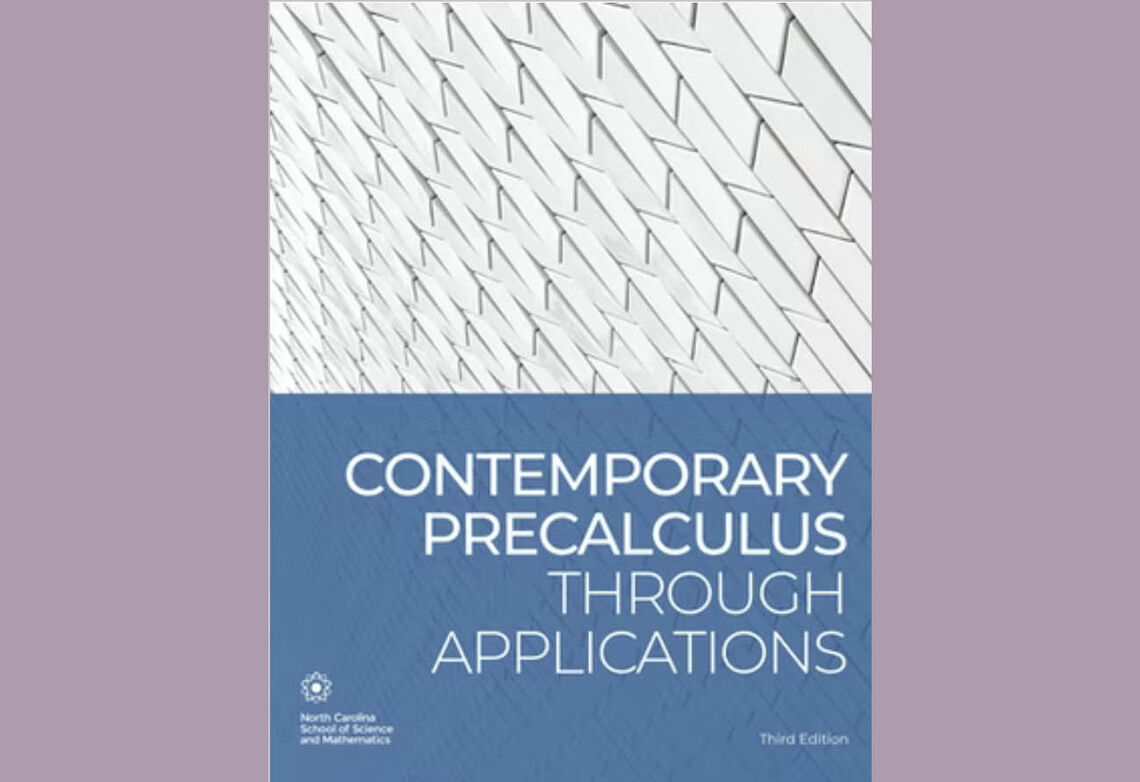 North Carolina School of Science and Mathematics is releasing a new edition of its popular precalculus textbook in partnership with UNC Press and making it available electronically to North Carolina high schools and colleges for free.
North Carolina School of Science and Mathematics is releasing a new edition of its popular precalculus textbook in partnership with UNC Press and making it available electronically to North Carolina high schools and colleges for free.
Even good used copies of the previous edition of the NCSSM textbook published by an imprint of textbook giant McGraw-Hill are selling for $97-$150 and even higher on Amazon. For the new edition, in addition to being free electronically, print copies are a much more accessible $38 for schools that desire that format.
Besides being affordable — even some digital versions of math textbooks run $150 nowadays — the textbook is aligned with North Carolina precalculus curriculum standards and what NC community colleges are teaching, making it a great resource for schools and colleges in the state. The NC Community College system is making the ebook available on its https://opennccc.nccommunitycolleges.edu/ website.
John Sherer, Director of UNC Press, says these advantages are designed to help the book make a big impact.
“This is an excellent example of collaboration between UNC Press and the UNC System and in particular with NCSSM, a statewide high school serving students with talents and interest in science, technology, engineering, and mathematics, and the only non-university member institution of the System,” he said. “Yet this open educational resource, or OER, is pitched to be useful at the high school and community college level and takes an approach that engages students to gain true understanding.”
Unlike a typical high school math book, this one has a lot of narrative explanations rather than being “a collection of a million math problems,” says. NCSSM Mathematics Dean Taylor Gibson, who said the book instead embodies NCSSM’s math modeling approach to teaching mathematics.
“That is, topics are introduced and reinforced by using math concepts and techniques for solving problems in the context of a real-world scenario,” Gibson says, “For instance, how to predict the path through space of a person riding the double ferris wheel at the state fair, deciding who has the better investment plan for retirement, or determining the relationship between the size of your dog and how much food it needs to eat.”
The data provided to students and used to set up a problem is real whenever possible — and always realistic when it needs to be fabricated,” Gibson says. “It gives students practice not only solving problems, but assessing whether their answers are reasonable by being able to compare to what they already know about real-life situations.”
Even producing a new edition of an existing textbook is an enormous, years-long project. NCSSM did this as a public service, not a revenue generator, he says, with faculty producing the update around the edges of their regular work. Some limited grant funding from UNC Press was used to cover NCSSM faculty time to contribute to the project.
“This is a really important way that NCSSM can be of service to math and science education in every corner of North Carolina,” says Chancellor Todd Roberts. “If we could identify some sources of funding to make it sustainable, this is the kind of thing we would love to be able to do more of. I’m very proud of the math department for sharing this approach to precalculus freely across our state.”
UNC System President Peter Hans said such service to students in North Carolina, even those not currently enrolled in UNC System institutions, is central to the system’s mission.
“This is a perfect example of how the UNC System and its constituent institutions render a great service to public education in North Carolina,” Hans said. “This textbook will now be more accessible at state high schools and community colleges to benefit tens of thousands of students. I commend UNC Press and NCSSM for partnering to expand access and opportunity for all.”
